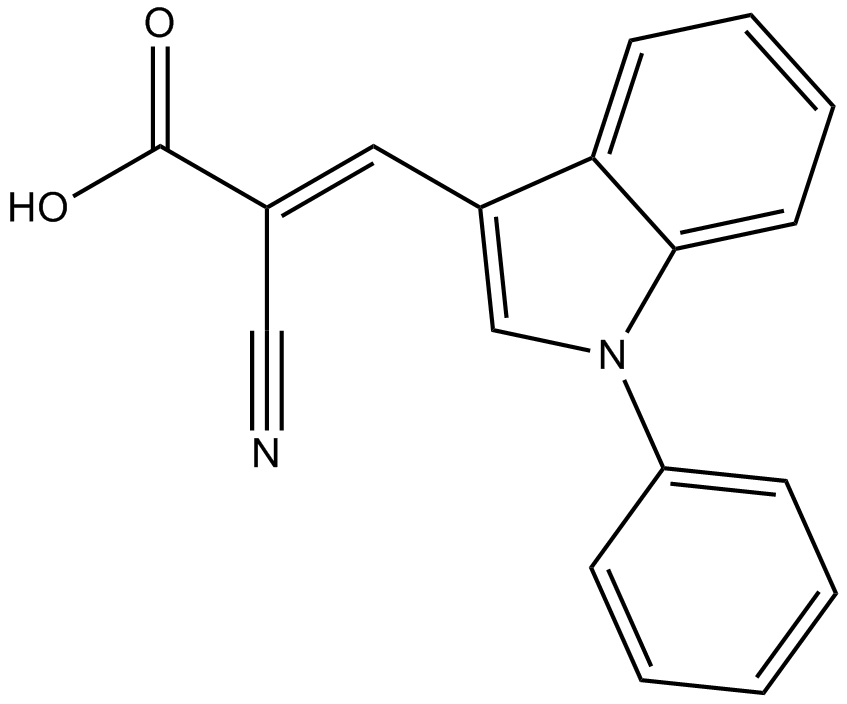UK-5099 (Synonyms: PF-1005023;UK5099;UK 5099;PF1005023;PF 1005023) |
| Catalog No.GC11865 |
An inhibitor of the mitochondrial pyruvate carrier
Products are for research use only. Not for human use. We do not sell to patients.

Cas No.: 56396-35-1
Sample solution is provided at 25 µL, 10mM.
UK-5099 is a potent inhibitor of the mitochondrial pyruvate carrier [1].
The mitochondrial pyruvate carrier (MPC) facilitates pyruvate transport across the mitochondrial inner membrane and plays a critical role in carbohydrate, lipid and amino acid metabolism.
UK-5099 (1 mM) completely blocked pyruvate uptake with Ki value of 49 μM. Also, UK-5099 decreased the overall efflux rate in a concentration-dependant way [1]. In mitochondria isolated from S. Guttatum, UK-5099 (20 μM) inhibited pyruvate-dependent 02 consumption [2].
In rat heart mitochondria, UK-5099 inhibited pyruvate oxidation with a non-linear inhibition kinetics [2]. In glucagon-treated rats, UK-5099 inhibited pyruvate carboxylation and total pyruvate metabolism with a linear relationship [3]. In rat liver and heart mitochondria, UK-5099 inhibited pyruvate-dependent 02 consumption with IC50 value of 50 nM [4].
References:
[1]. Wiemer EA, Michels PA, Opperdoes FR. The inhibition of pyruvate transport across the plasma membrane of the bloodstream form of Trypanosoma brucei and its metabolic implications. Biochem J, 1995, 312 ( Pt 2): 479-484.
[2]. Halestrap AP. The mitochondrial pyruvate carrier. Kinetics and specificity for substrates and inhibitors. Biochem J, 1975, 148(1): 85-96.
[3]. Halestrap AP, Armston AE. A re-evaluation of the role of mitochondrial pyruvate transport in the hormonal control of rat liver mitochondrial pyruvate metabolism. Biochem J, 1984, 223(3): 677-685.
[4]. Proudlove MO, Beechey RB, Moore AL. Pyruvate transport by thermogenic-tissue mitochondria. Biochem J, 1987, 247(2): 441-447.
Average Rating: 5 (Based on Reviews and 30 reference(s) in Google Scholar.)
GLPBIO products are for RESEARCH USE ONLY. Please make sure your review or question is research based.
Required fields are marked with *




